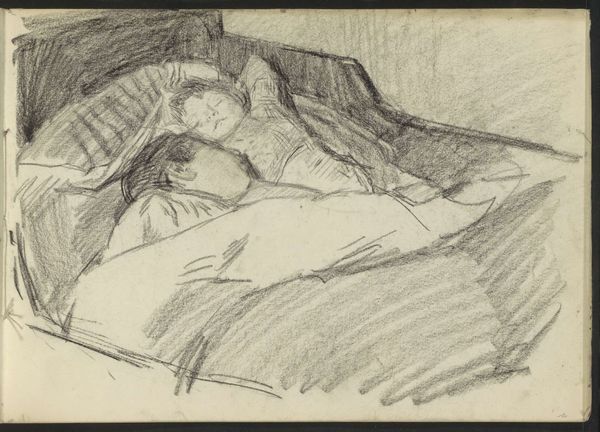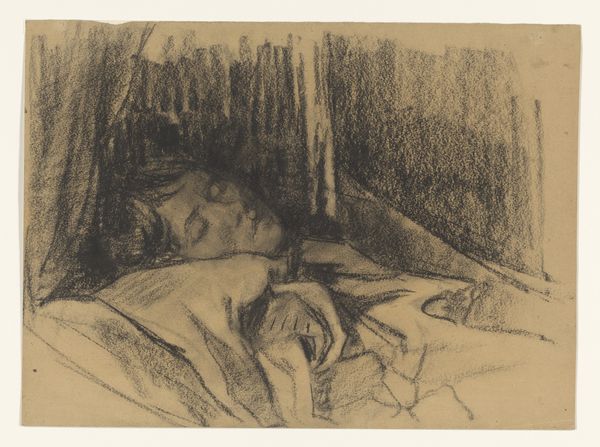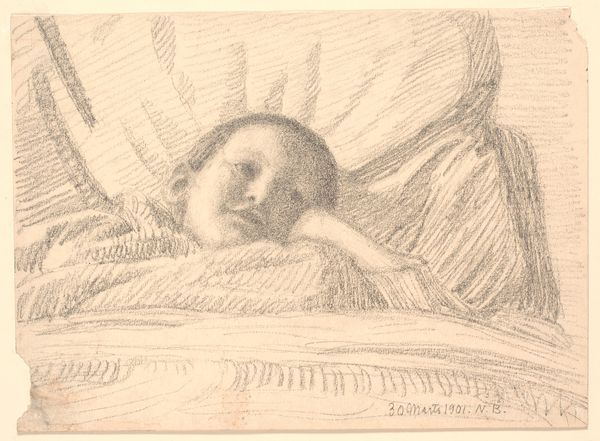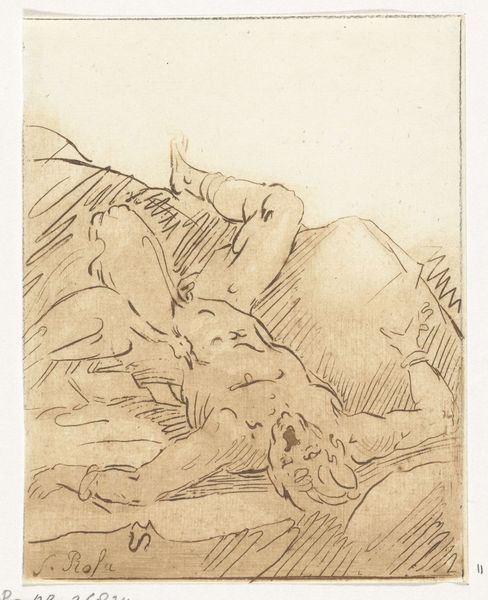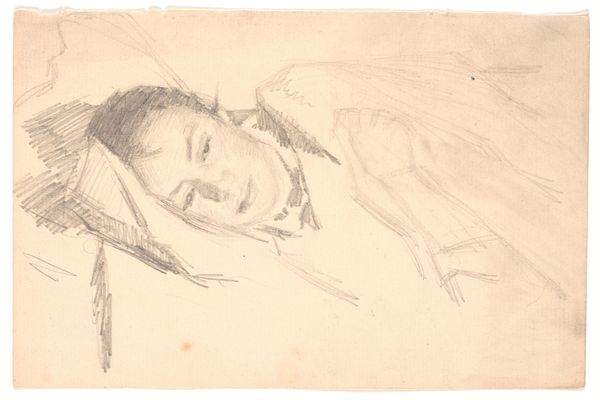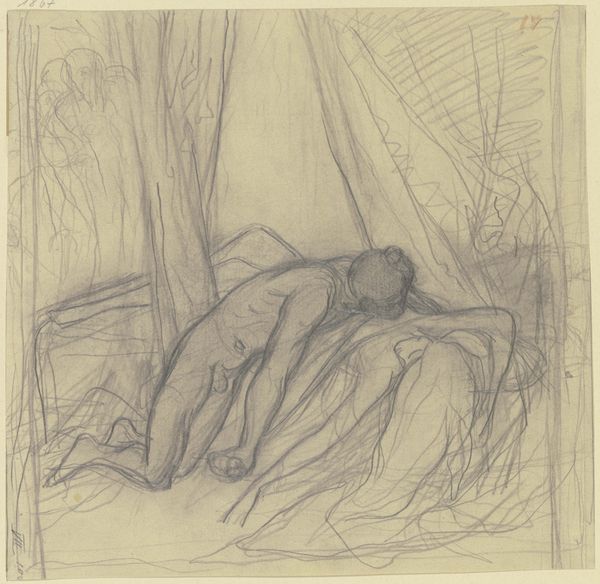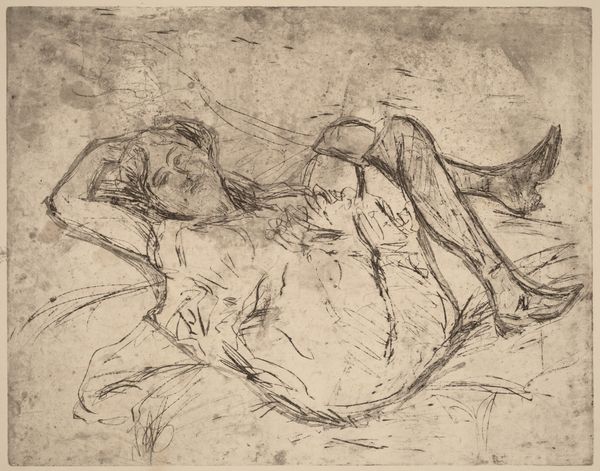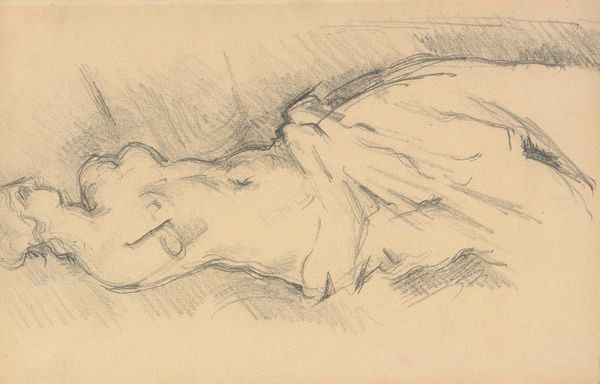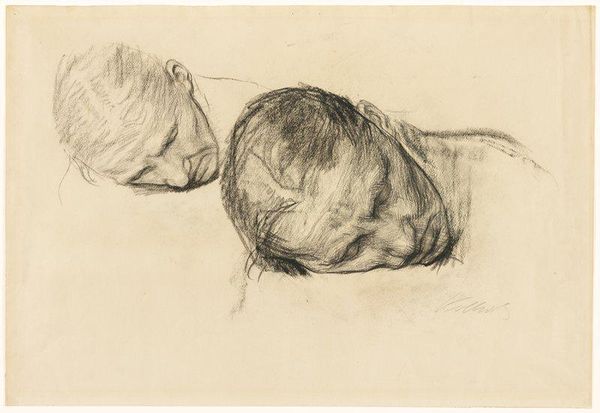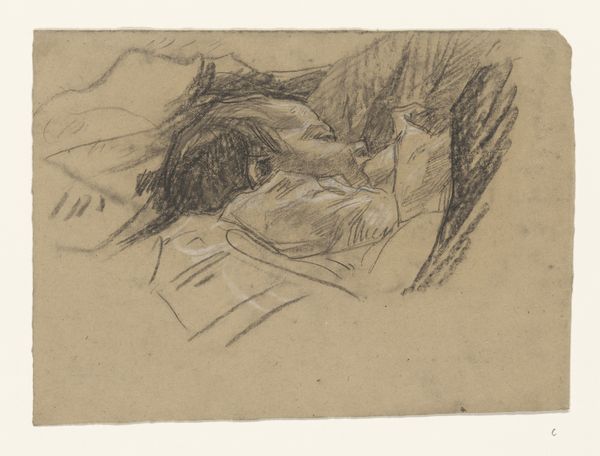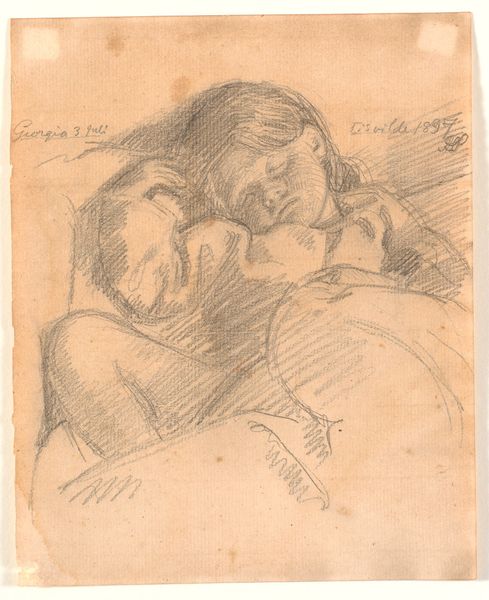
drawing, charcoal
#
portrait
#
drawing
#
charcoal drawing
#
pencil drawing
#
portrait drawing
#
genre-painting
#
charcoal
#
northern-renaissance
#
realism
Dimensions: sheet: 38.5 x 49.9 cm (15 3/16 x 19 5/8 in.)
Copyright: National Gallery of Art: CC0 1.0
Editor: Here we have Leopold von Kalckreuth's "The Artist's Children Wolf and Anna Asleep," a charcoal drawing from around 1900. I find the intimate depiction of these sleeping children quite touching. The artist really captured a moment of serene vulnerability. What strikes you most about its composition? Curator: The image presents a compelling study of form and tonality. Note the subtle variations in shading that define the contours of the children's faces and the drapery of the bedding. Kalckreuth masterfully uses charcoal to create a sense of depth and volume. Do you observe how the stark horizontal lines of the bed frame contrast with the soft, rounded shapes of the sleeping figures? Editor: Yes, the geometric lines of the bed really anchor the scene, providing a structured setting for the more organic forms. It's interesting how that contrast also plays with the textures... the crispness of the bed frame versus the softness of the blankets. Curator: Precisely. It's in these relationships – between line and curve, light and shadow, texture and form – that the work generates meaning. One could argue the artist seeks not only to depict his children, but to explore the very essence of tranquility through formal means. How does the restricted palette contribute, do you think? Editor: The muted tones definitely reinforce the feeling of stillness and quiet. There is something very private and sheltered evoked by these pale tonalities, a quiet protection almost. Curator: An astute observation. By limiting his color choices, Kalckreuth forces us to focus on the inherent qualities of the drawing itself—its lines, its textures, its manipulation of light. The piece transcends its subject, becoming an essay on artistic form itself. Editor: I see now how a formalist lens reveals the technical prowess behind what initially seems a straightforward depiction. I now appreciate the artist's skill and deliberate compositional choices more deeply. Curator: Indeed. Through its restrained palette and nuanced manipulation of form, the work compels us to appreciate the fundamental elements of artistic expression.
Comments
No comments
Be the first to comment and join the conversation on the ultimate creative platform.
